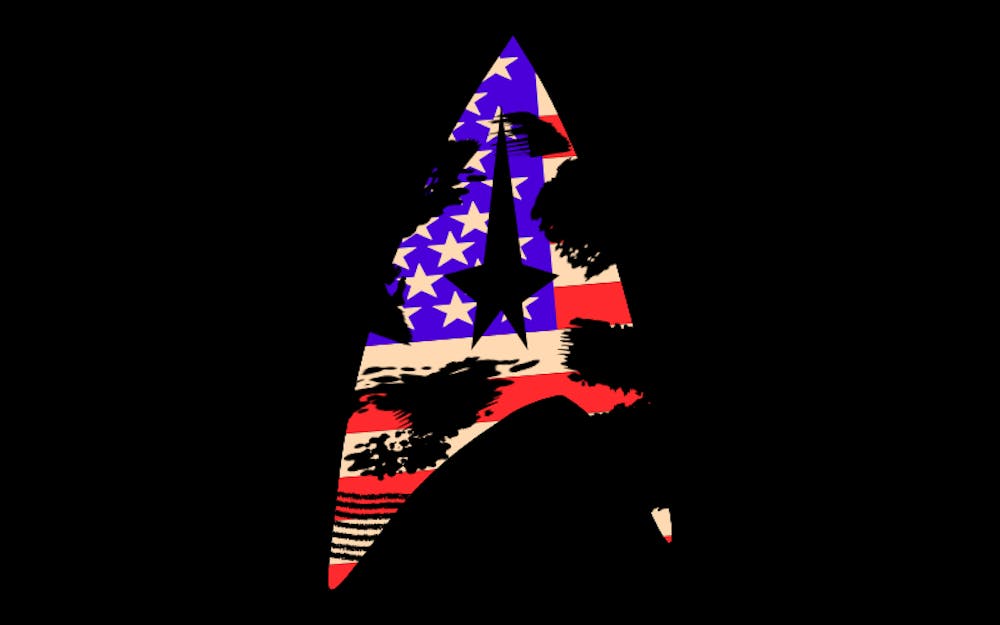“The United Federation of Planets” is an organization within the Star Trek franchise that bound together over 150 planets and their species by the year 2373. Its title is rightfully filled with grandeur—throughout the various television series within the franchise, the Federation is shown to lead with diplomacy, morality, and in the nature of the preservation of life throughout the galaxy.
When Gene Roddenberry created Star Trek in 1966, he designed an idealized future, where all humans were represented—or as much as they could be on a television show made in the 1960s. The people of Earth coexisted with species from other planets in order to maintain peace as they traveled through the stars. During the turbulent late '60s, Roddenberry’s aspirations for what lay ahead were a sharp contrast to the bigotry and pain many Americans were experiencing.
The Federation was an idealized hope for the United States that could be if the work being put into the Civil Rights Movement was allowed to continue into the future. The franchise expanded into an animated show in 1973, then into movies in 1979, and into a new era of television in 1987, and throughout it all, his vision was rarely challenged. Why present a future that went against the boundless optimism he had in humanity's potential? However, Roddenberry’s death in 1991 marked an end to his tight grip on the writing for the shows, and subsequently, Star Trek: Deep Space 9 revealed a darker side to the Federation in Section 31.
Section 31 was a covert group of officers that followed “section 31:” a clause in the Federation’s charter that enabled them to take “extraordinary measures” in times of “extreme threat." Section 31 lacks the firm moral compass that guides the actions of the Federation. Yet, they see themselves as a necessity to maintain the Federation’s presence. Although the creation of Section 31 certainly went against Roddenberry’s initial utopian vision for the future, it furthered the unwavering permanence of the Federation—until now, that is.
Season three of Star Trek: Discovery, the first of a new period of Star Trek shows, jumps ahead to the year 3188, and to a universe in which the Federation has fallen. With only two episodes released, we don't know much yet. But it’s visible that the crew, which has traveled all the way from the 23rd century, is as shaken as the viewer by the new situation. What remains of the Federation is dispersed too sparsely to be anything more than an urban legend, weakened by an event called “the Burn” in which nearly all of the dilithium, or starship fuel, was destroyed.
It's intentionally remarkable how that one small change in the universe so dramatically destroyed the one constant in the world of Star Trek. The situation that the Discovery finds itself in is timely; like its crew, we have all found our lives overturned this year by a snowballing problem—in our case the microscopic coronavirus that has killed nearly 250,000 Americans. Like the Federation's inability to maintain order without mobilized starships, the U.S. government's powerlessness in the face of a disease has exposed structural weakness in an institution thought to be impenetrable.
Season three of Discovery is not the first time Star Trek visits the far future. That honor goes to a mini–episode, aired between the first and second seasons, called “Calypso.” It didn’t acknowledge the presence of the Federation at all. However, mentioned was an unfavorable organization called the “V’draysh.” In 2018, the V’draysh seemed irrelevant to the Star Trek canon, until episode writer Michael Chabon confirmed that V’draysh was a syncope—a clipped up phonetic modification in which a word loses unstressed syllables—of Federation. Essentially, in the future, the Burn caused the Federation to fade into a mere shadow of its former self, and not necessarily one that was on the right side of history.
The precious Federation being unrecognizable in its new form is shocking. However, the use of syncopes to indicate something once grand, but now tattered, is not foreign to Star Trek. In the original series episode “The Omega Glory,” Captain Kirk and his crew wind up on a planet populated by the savage “Yangs” and the more civilized, developed “Kohns”. Eventually, it's revealed that Yang is a syncope for yankee and Kohn for communist, and that this planet—for no well–explained reason whatsoever—once resembled Earth. Both groups, but especially the Yangs, have been in social decline following biological warfare. This episode makes very little sense, and has since been criticized for the underlying racism in its script. But if you can take it with a grain of salt, it's a fun and clever piece of retro science–fiction.
You can’t help but feel empowered as Kirk leads the Yangs from their garbled interpretation to a clear reading of the preamble to American constitution. He reasserts the values of liberty, equality, and fraternity present in the history of the United States of America—a history which has clearly inspired the doctrines of the United Federation of Planets.
The use of syncope to create the currently unexplored V’draysh appears to be a callback to “The Omega Glory," an episode where we see the United States fallen, barely understanding the principles that brought it to life. This callback is not without purpose. Discovery is sending a warning: Nothing, not even the Federation—and more importantly the United States—is too big and powerful to fail.
From what we know so far, in the 31st century, a fuel crisis tears apart that which holds the Federation together. In the 21st century, we're dealing with a pandemic, inflamed racial tensions, a disturbing mass belief in unfounded conspiracy theories, and a president who chooses to incite fascist values in his followers rather than American ones. In both instances, it's clear that we must do the work to ensure that the ideals that created this country are taught, understood, and put into practice. This way, we can build a future like that of the Federation—and not the V’draysh.

